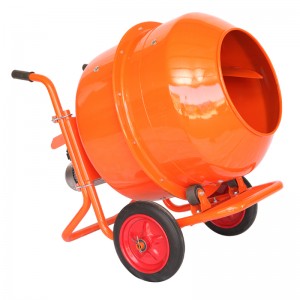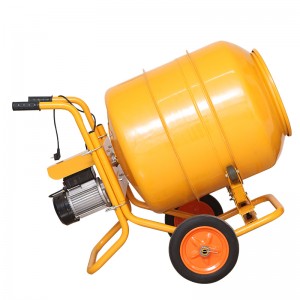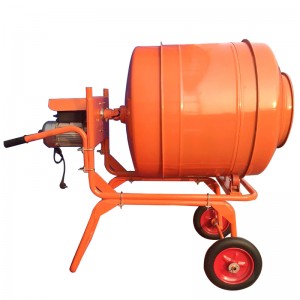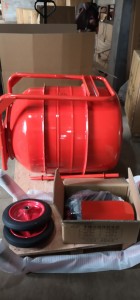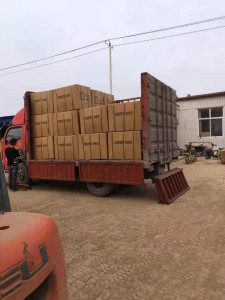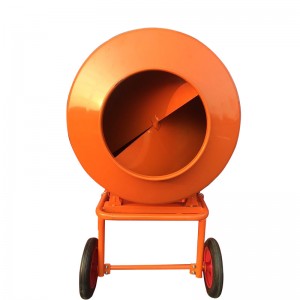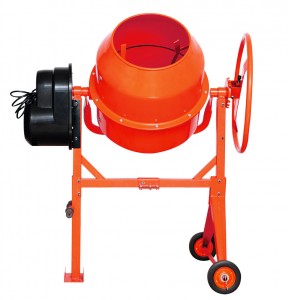A cement mixer, also known as a concrete mixer, is a machine used to mix cement, aggregates (such as sand or gravel), and water to form concrete. Concrete mixers are commonly used in construction sites, for small to medium-scale concrete projects, and in the preparation of building foundations, sidewalks, driveways, and other structures. Here are some key features and information about cement mixers:
Drum Design: Cement mixers typically have a rotating drum with fixed paddles or blades inside. The drum is mounted on a frame and can be tilted or rotated to mix the ingredients thoroughly.
Types of Cement Mixers:
Drum Mixer: This is the most common type of cement mixer, where the drum rotates on a horizontal axis. It can be powered by electricity, gasoline, or diesel engines.
Vertical Shaft Mixer: In this type, the drum is mounted vertically, and the mixing action is achieved by a spiral blade or paddles attached to a rotating shaft. Vertical shaft mixers are commonly used for specialized applications or in situations where space is limited.
Reversing Drum Mixer: This type of mixer has a rotating drum that can tilt in both directions, allowing for efficient mixing and discharge of the concrete.
Mixing Capacity: Cement mixers come in various sizes and mixing capacities, ranging from small portable mixers for DIY projects to large industrial mixers used in commercial construction. The mixing capacity is typically measured in cubic feet or liters.
Power Source: Cement mixers can be powered by electricity, gasoline engines, or diesel engines. Electric-powered mixers are suitable for indoor or residential use, while gasoline or diesel-powered mixers are more common on construction sites or remote locations where electricity may not be readily available.
Loading and Discharging: Cement mixers usually have a hopper or funnel at the top for adding cement, aggregates, and water. In some mixers, the ingredients are manually fed, while others have automated systems for loading. To discharge the mixed concrete, the drum can be tilted or rotated to pour the contents into a wheelbarrow, concrete pump, or directly onto the desired location.
Safety Features: Cement mixers may include safety features such as a protective grill or cover over the rotating drum to prevent accidental contact with moving parts. Some mixers also have emergency stop buttons or switches for added safety during operation.
Maintenance and Cleaning: Regular maintenance is important to keep a cement mixer in good working condition. This includes cleaning the drum, lubricating moving parts, and inspecting for any wear or damage. It is also crucial to follow the manufacturer’s guidelines for safe operation and maintenance.
When using a cement mixer, it is essential to wear appropriate personal protective equipment, such as gloves and safety glasses, to protect against potential hazards. Additionally, operators should follow proper procedures for loading materials, starting and stopping the mixer, and handling the mixed concrete.
Post time: Sep-01-2023





